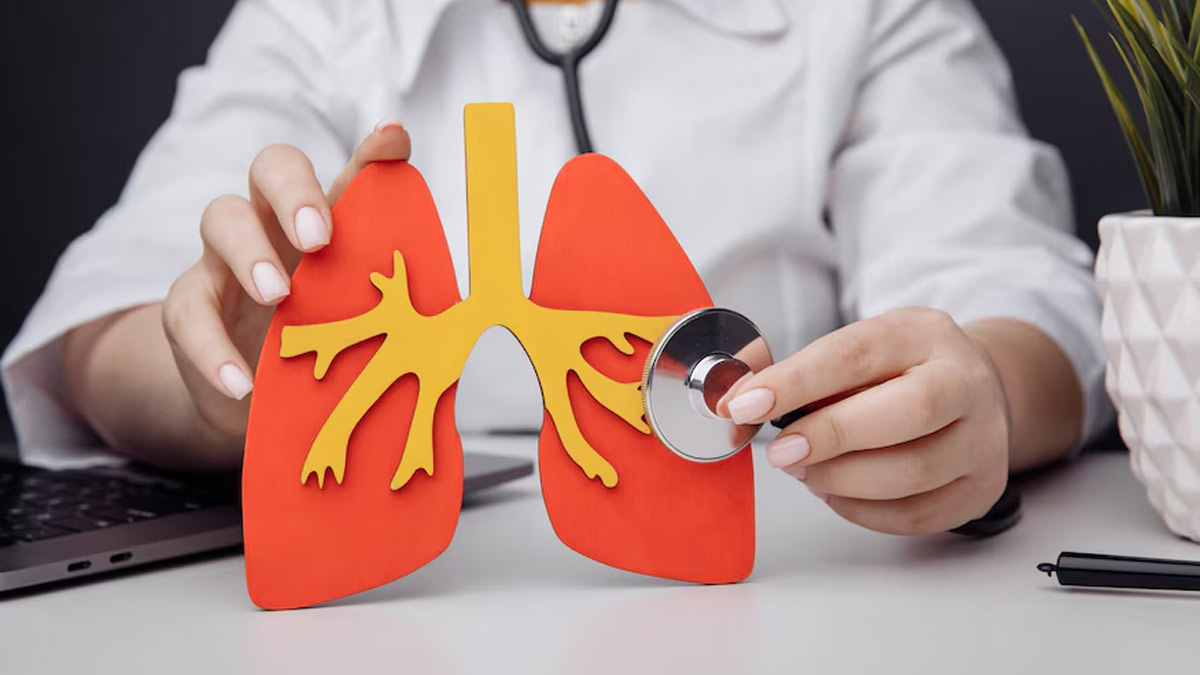
Tuberculosis (TB) is an infectious disease that mostly affects the lungs. It is caused by a type of bacteria that is transmitted through the air when people sneeze, cough, or spit.
According to the World Health Organization (WHO), tuberculosis is usually treated with antibiotics, including isoniazid, rifampin, pyrazinamide, ethambutol, and streptomycin. However, in certain cases, these treatments may not work.
Table of Content:-
Having Multidrug-Resistant Tuberculosis (MDR-TB) is one such scenario, where TB bacteria become resistant to at least isoniazid and rifampin, the two most potent TB drugs. Ahead of World Tuberculosis Day, celebrated annually on March 24, we spoke to experts to understand the causes of MDR-TB and what it takes to manage the condition.
Also Read: Tuberculosis: Here Are Some Of Its Types You Must Know
What Causes Multidrug-Resistant Tuberculosis?

In an interaction with the OnlyMyHealth team, Dr Pankaj Jain, Consultant Pulmonogist, Apollo Clinic, Viman Nagar, Bengaluru, describes MDR TB as a disease caused by bacteria that is resistant to the most powerful and important drugs used in the treatment of TB: isoniazid and rifampin.
According to him, resistance to antitubercular drugs occurs when these drugs are misused or mismanaged.
Patients either do not complete their full course of treatment or take the wrong treatment with the wrong dose or for the wrong duration, he says.
Therefore, some of the people who may be at risk of the condition include people who:
- Do not take medicine regularly.
- Do not take all medicines as told by the doctor.
- Develop TB disease again after taking TB medicine in the past.
- Have spent some time with a known MDR-TB patient.
Globally, there were an estimated 4.5 lakh cases of MDR-TB in 2021, with India, the Russian Federation, and Pakistan accounting for 42% of global cases, according to a study published in the journal Infectious Diseases of Poverty.
Can MDR-TB Be Prevented?

According to Dr Rohan R Naick, Consultant Pulmonologist, SPARSH Hospital, Bengaluru, MDR-TB can be prevented with a proper diagnosis and adherence to the recommended treatment regimens.
Additionally, it is also important to monitor patients' responses to treatment and ensure that therapy is completed.
“The most important thing a person can do to prevent the spread of MDR-TB is to take all medicines regularly as prescribed by the doctor. No dose should be missed,” says Dr Jain.
In case patients have any trouble with medicines or develop adverse effects, it is advised to consult a healthcare provider, the doctor adds.
Also Read: Types of Tuberculosis You Must Be Aware Of
Treatment And Measures To Take

Dr Naick says that different antibiotic combinations may have to be used for treating MDR-TB.
Given that the two most effective first-line TB drugs (isoniazid and rifampicin) fail to treat TB, MDR-TB requires second-line drugs, including kanamycin, capreomycin, and amikacin via injections, as per StatPearls Publishing. Fluoroquinolones such as levofloxacin, moxifloxacin, and gatifloxacin can also be used in treating MDR-TB, research suggests.
“It is important for people who have been diagnosed with MDR-TB to complete the full course of their medication so that they can avoid further resistance, which would eventually lead to bad consequences. The key factors in fighting against MDR-TB and keeping it from spreading include early detection, effective management, and treatment compliance,” he adds.
The WHO maintains that MDR-TB remains a public health crisis and a health security threat. It says that only about two in five people with drug-resistant TB will access treatment in 2022.
Also watch this video
How we keep this article up to date:
We work with experts and keep a close eye on the latest in health and wellness. Whenever there is a new research or helpful information, we update our articles with accurate and useful advice.
Current Version